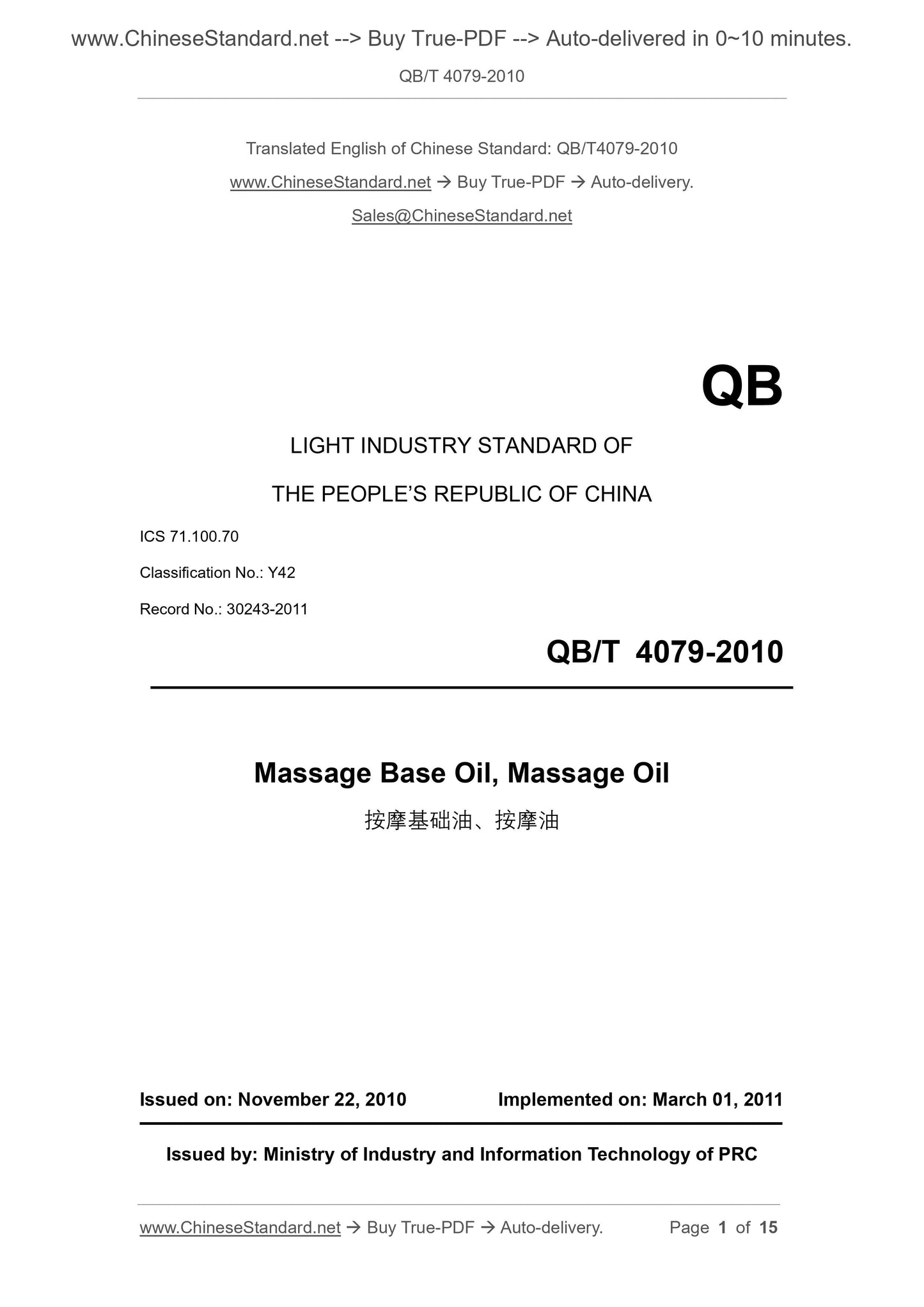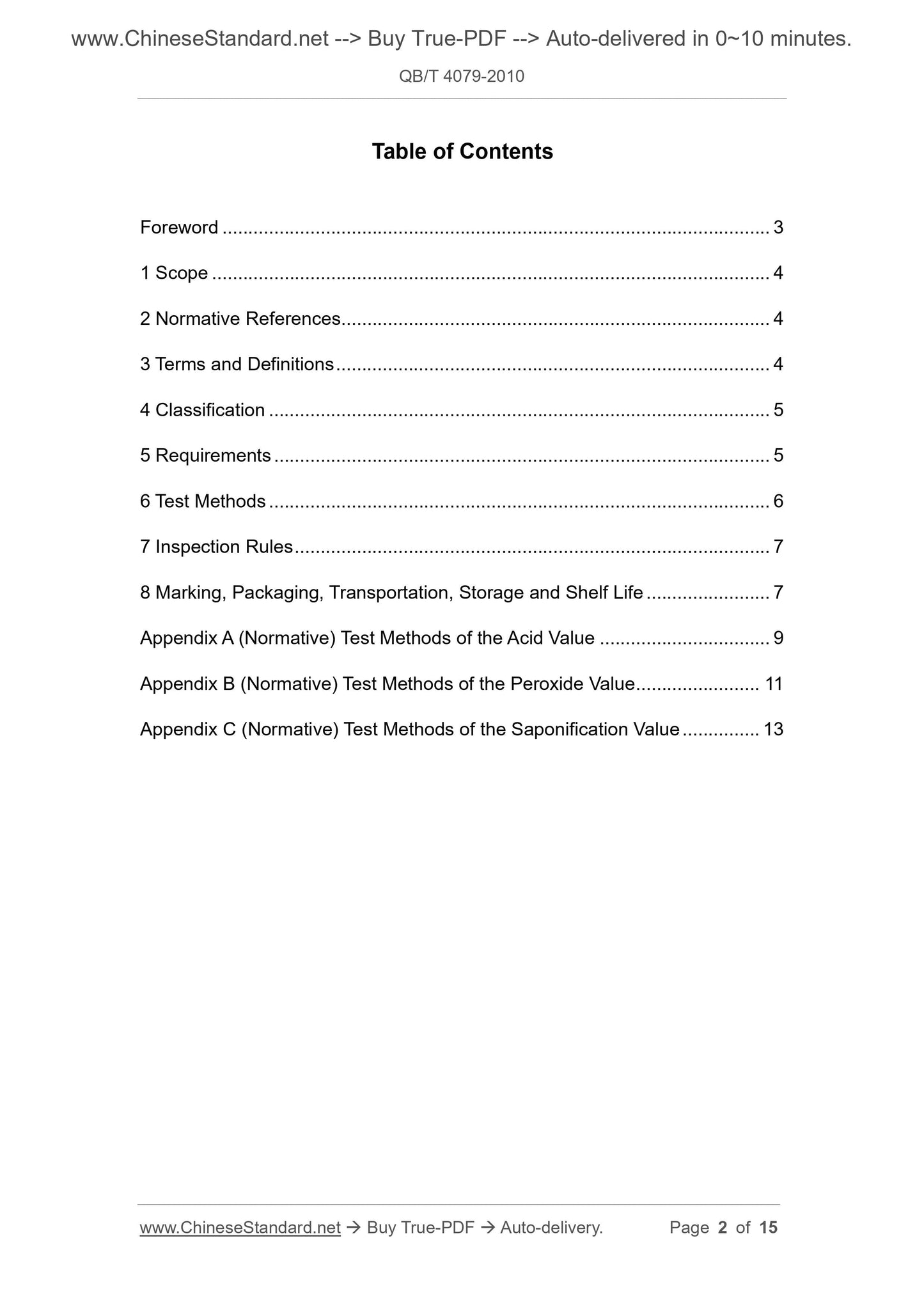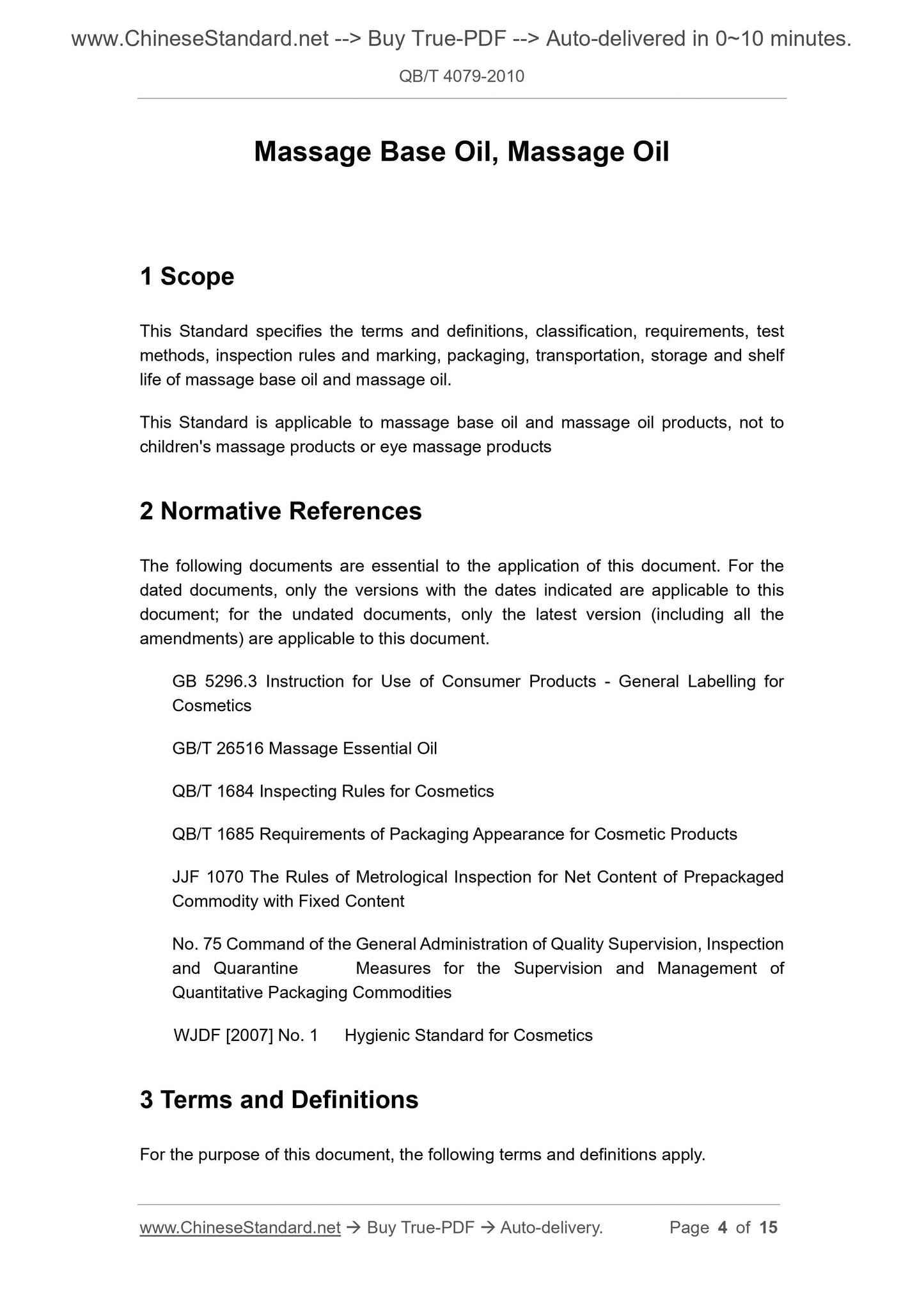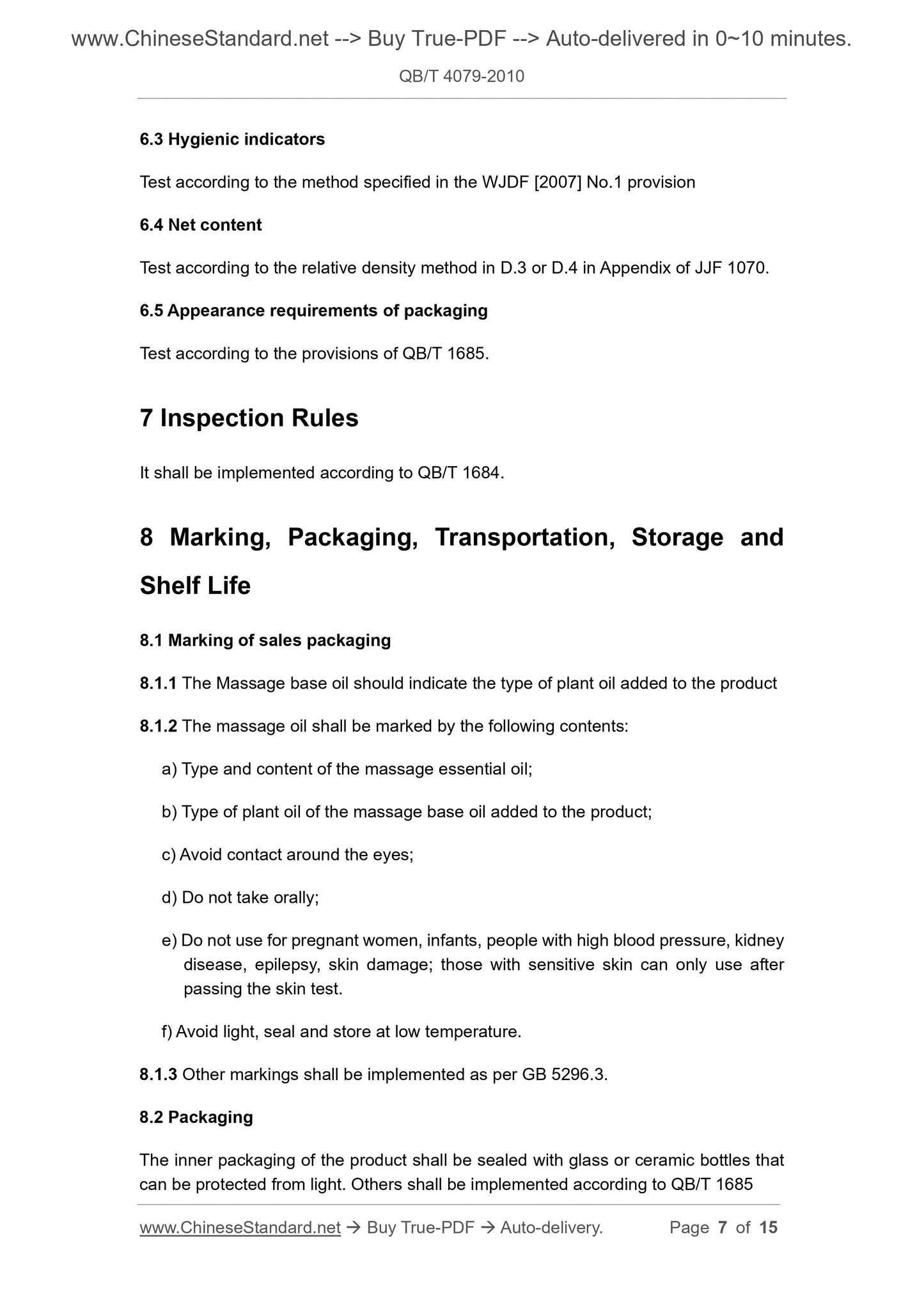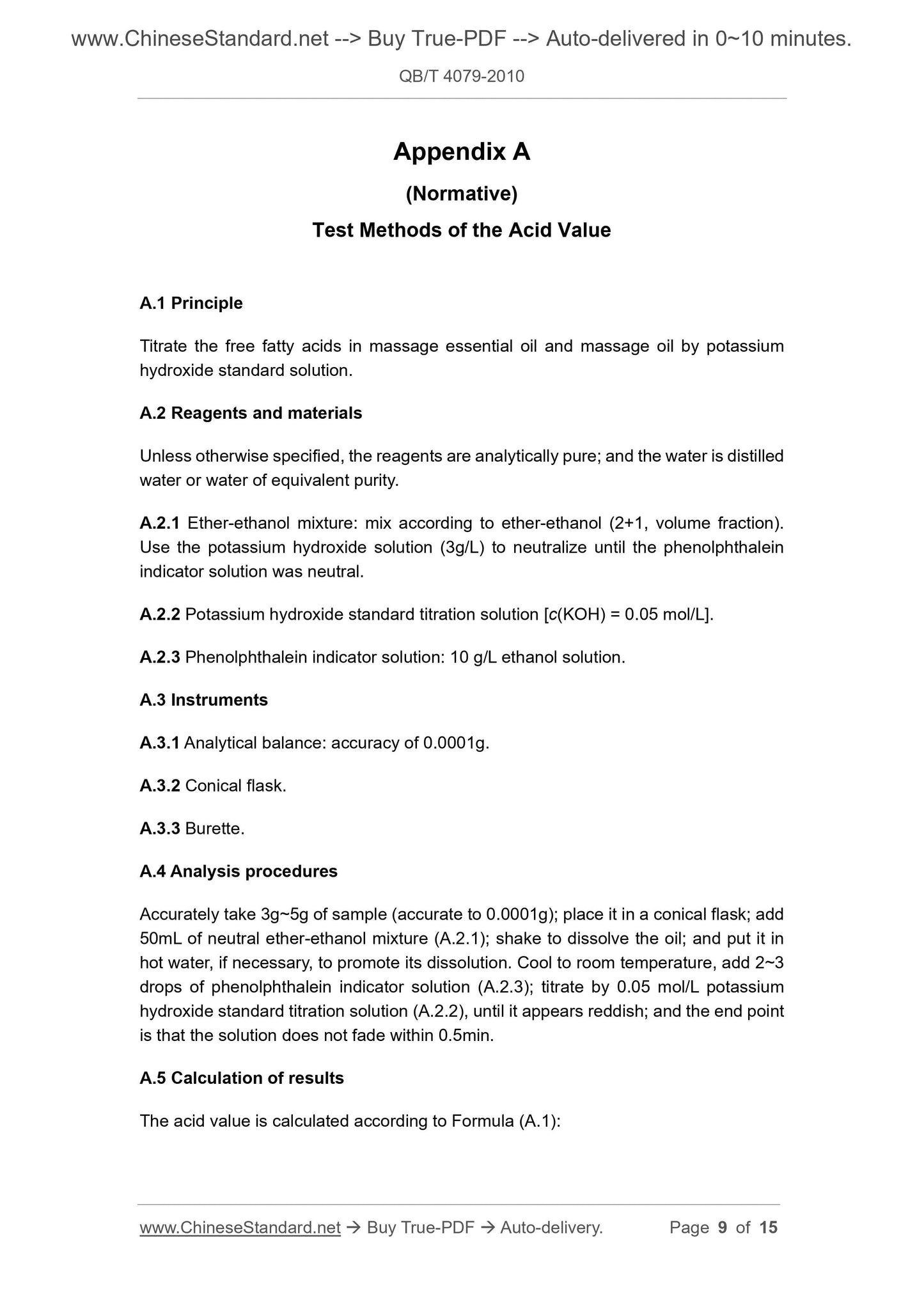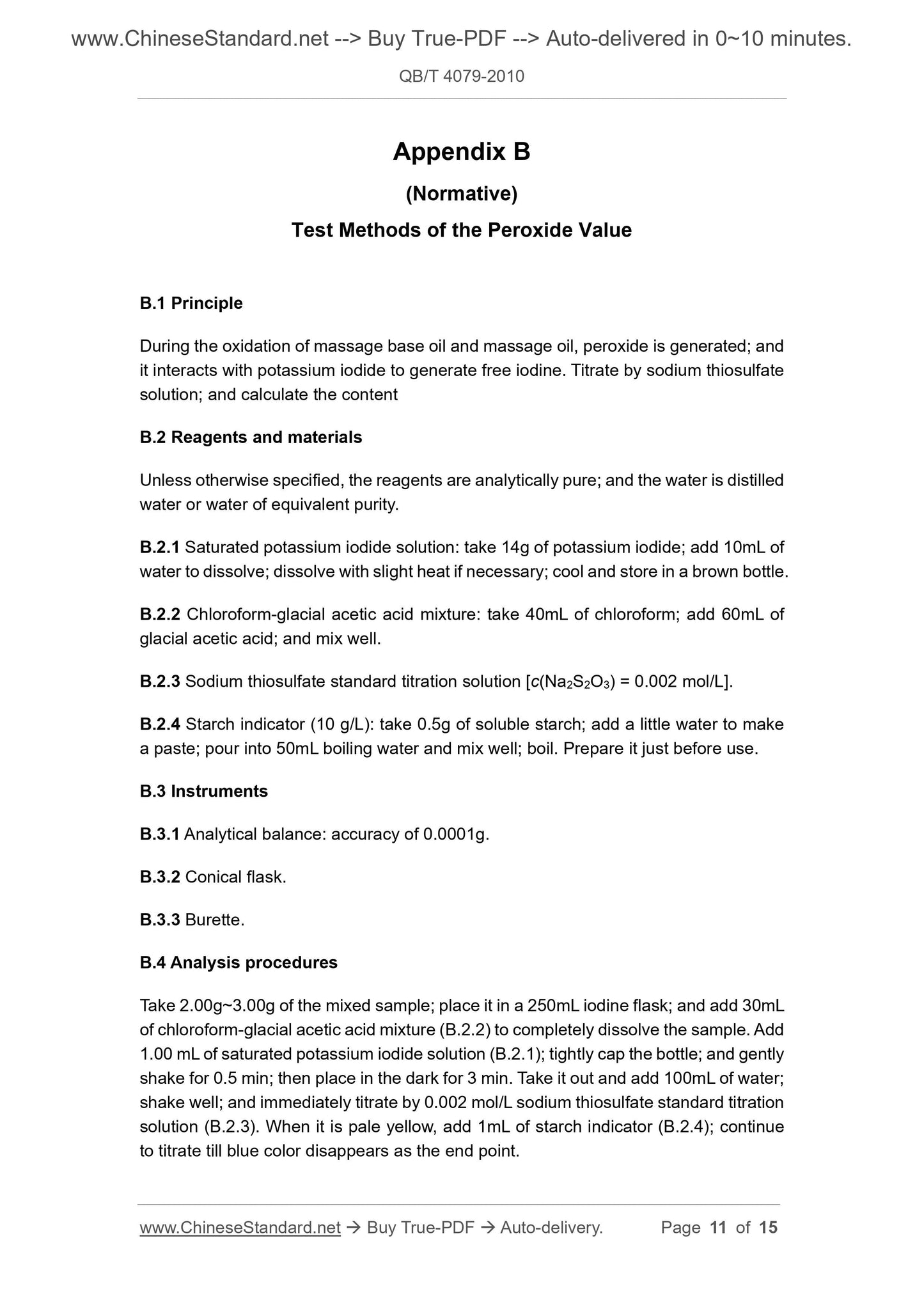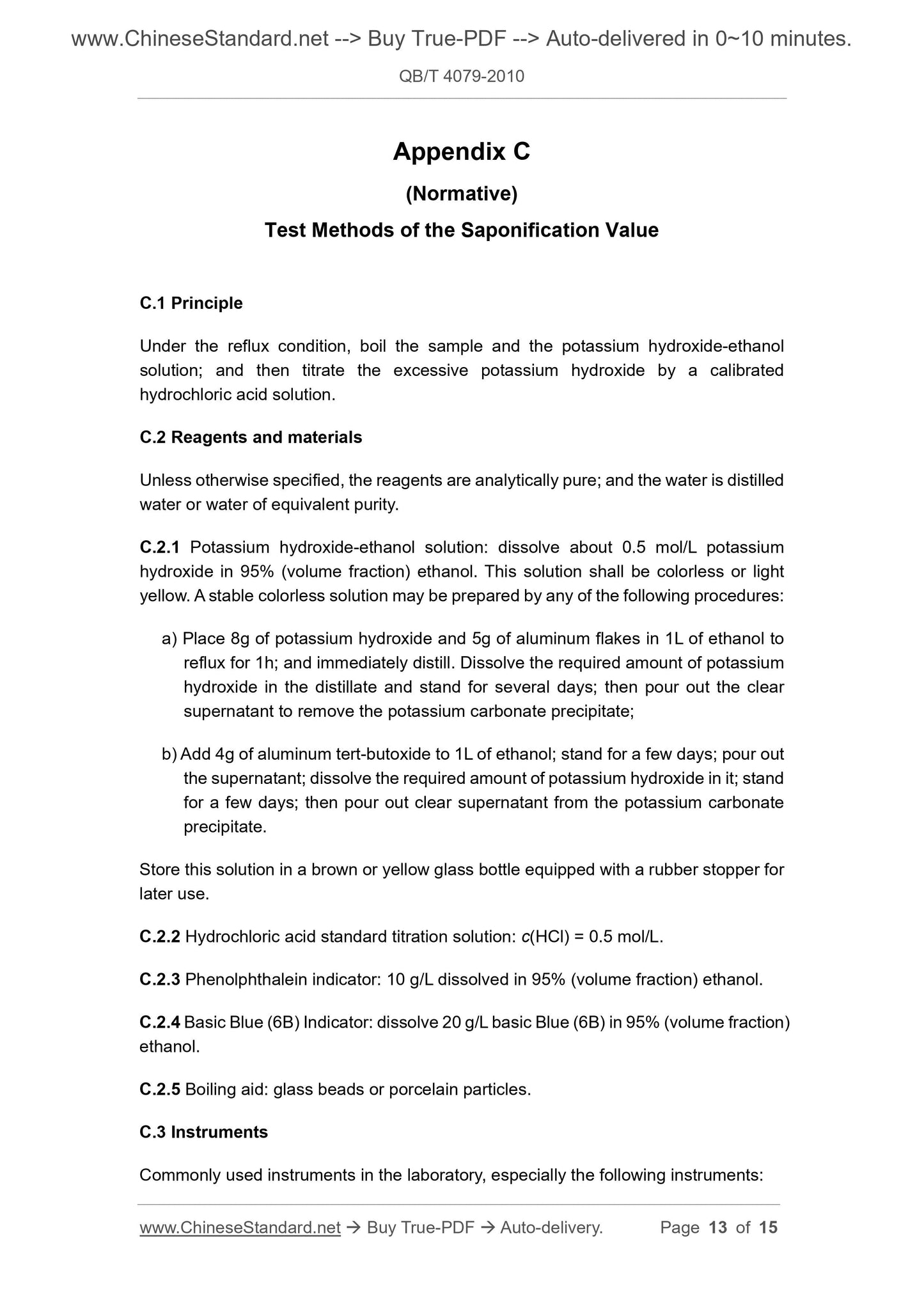1
/
of
7
www.ChineseStandard.us -- Field Test Asia Pte. Ltd.
QB/T 4079-2010 English PDF (QB/T4079-2010)
QB/T 4079-2010 English PDF (QB/T4079-2010)
Regular price
$170.00
Regular price
Sale price
$170.00
Unit price
/
per
Shipping calculated at checkout.
Couldn't load pickup availability
QB/T 4079-2010: Massage Base Oil, Massage Oil
Delivery: 9 seconds. Download (and Email) true-PDF + Invoice.Get Quotation: Click QB/T 4079-2010 (Self-service in 1-minute)
Newer / historical versions: QB/T 4079-2010
Preview True-PDF
Scope
This Standard specifies the terms and definitions, classification, requirements, testmethods, inspection rules and marking, packaging, transportation, storage and shelf
life of massage base oil and massage oil.
This Standard is applicable to massage base oil and massage oil products, not to
children's massage products or eye massage products
Basic Data
| Standard ID | QB/T 4079-2010 (QB/T4079-2010) |
| Description (Translated English) | Massage Base Oil, Massage Oil |
| Sector / Industry | Light Industry Standard (Recommended) |
| Classification of Chinese Standard | Y42 |
| Classification of International Standard | 71.100.70 |
| Word Count Estimation | 10,166 |
| Date of Issue | 2010-11-22 |
| Date of Implementation | 2011-03-01 |
| Quoted Standard | GB 5296.3; GB/T 26516; QB/T 1684; QB/T 1685; JJF 1070; the State Administration of Quality Supervision, Inspection and Quarantine Order No. 75 of prepackaged goods metrological supervision and management measures; Health Authority [ 2007 ] 1 Hygienic Standard for Cosmetics |
| Regulation (derived from) | ?Industry-Science (2010) No.126; |
| Issuing agency(ies) | Ministry of Industry and Information Technology |
| Summary | This standard specifies the massage base oil, terms and definitions massage oils, classification, requirements, test methods, inspection rules and signs, packaging, transport, storage and shelf life requirements. This standard applies to massage base oil, massage oil products, NA child massage products. |
Share
